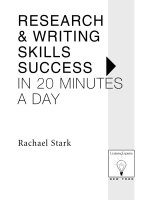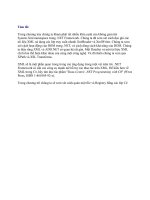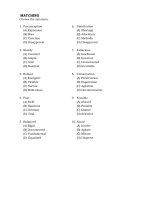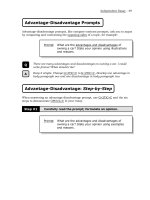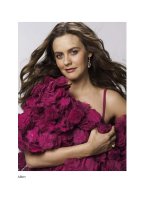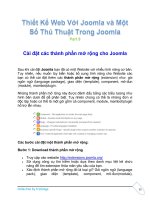Tài liệu RESEARCH AND WRITING SKILLS SUCCESS PART 9 ppt
Bạn đang xem bản rút gọn của tài liệu. Xem và tải ngay bản đầy đủ của tài liệu tại đây (74.15 KB, 7 trang )
In Example B, you have recorded the exact
same information that the book provided;
however, you chose to arrange the material to
emphasize that Kennedy’s initial welcoming
reception was suspect. You have not changed
any of the facts; you’ve only chosen to put
emphasis on a different aspect of the historical
situation. Again, as long as you have recorded
all the precise information about the book and
as long as you list it in your bibliography, it is
acceptable to write a note card this way. A third
way of taking down the same information
might be the following.
– NOTETAKING–
43
Example B
The American People (Title)
Nash, Jeffrey, Howe, Frederick, Davis, and
Winkler (Authors)
Harper & Row, Publishers, Inc., New
York, 1990. (Publishing information)
1 (Number of Index Card)
Kennedy’s Death (Subject Heading)
Despite the fact that the crowds gave Kennedy a warm welcome,
suddenly, from out of the blue, shots were fired. p. 963 (precise
page number of citation)
Example C
The American People (Title)
Nash, Jeffrey, Howe, Frederick, Davis, and
Winkler (Authors)
Harper & Row, Publishers, Inc., New
York, 1990. (Publishing information)
1 (Number of Index Card)
Kennedy’s Death (Subject Heading)
Kennedy’s death was the work of a lone assassin. “Lee Harvey
Oswald, the assassin, was himself shot and killed a few days later
in the jail where he was being held.” p. 963 (precise page num-
ber of citation)
In Example C, you decided to include a direct
quote from the text about Lee Harvey Oswald
to emphasize the point that he was acting
alone. Perhaps you liked the way the authors
stated this fact and wanted to use their exact
words in your paper. Exact quotes add support
to a research paper. Just be sure to fully credit
your sources.
To summarize, be precise when writing
notes on your note cards because you are accu-
mulating facts for your paper. Take down
information accurately and complete your
note cards thoroughly. Factual material, direct
quotes, unique ideas, unusual phrases, per-
spectives, or statistics are all good information
to add to note cards for future reference.
Simple facts are easy to paraphrase, but some-
times you might want to use the exact words of
an author because you may like the way he or
she states the case. You can make that decision
as you continue your research. Be sure that you
note the page number of any information you
use from a source, regardless of whether it is a
direct quotation or information you have par-
aphrased.
How Note Cards Will Help You
Keep all your note cards in your index card
container and use the alphabetical tabs to keep
them arranged by subject heading. In this way,
you can leave the library and the actual books
behind and travel instead with your note card
holder—your own personal, moving library.
In fact, when you are ready to sit down and
write the paper, you can write it from your
note cards only—without having to go to the
trouble of locating the original book again.
Note cards are easy to arrange in stacks, unlike
books, and are particularly easy to flip through
and consult. In fact, if you take your notes
carefully, most of your information will have
already been organized and arranged before-
hand, making your first draft easy to write.
Summary
Notetaking and note cards are a handy, fool-
proof way for you to record important infor-
mation in a format that you can easily access.
Keep all of your note cards in one place, and
organize them according to subject heading.
Make sure that all relevant information is con-
tained on those cards so that you do not have
to duplicate any of your work or hunt down
sources after you have consulted them. Having
neat and detailed note cards makes writing
your paper easier.
– NOTETAKING–
44
LESSON
45
LESSONLESSON
A
fter spending time in the library and taking down a great deal of important information,
you are now ready to begin. Note cards are a wonderful way to store and record infor-
mation because they are both easy to use and handy to arrange. Take your note cards from your
holder and begin to arrange and rearrange them like a deck of cards, or lay them flat on a table.
Before you even begin to write down anything on a sheet of paper, first group your note cards in
the following patterns. Look at each of the arrangements and study them for a few moments
before collecting them all back together again. For instance, you can arrange your cards in stacks
according to:
1. Each book that you have used
2. Topic or subject heading
3. Chronological order: beginning, middle, and end
LESSON
Beginning an
Outline
LESSON SUMMARY
Learning to write an outline is the most helpful process you can
complete before beginning to write your paper. Although it may
seem difficult, if you have compiled your note cards, you are
already well on your way towards completing your first outline. This
lesson will show you how to construct a preliminary outline from
your note cards, and use it as a guide for writing and thinking
about the first draft of your paper.
8
Studying Your Note Cards
Looking at your note card arrangements is
both fun and instructive, and is a little bit like
piecing together a puzzle. Since each note card
is a valuable piece of information—an idea, or
a portion of a book—the way they are distrib-
uted can tell you a great deal about how you
might structure and write your paper. For
instance, by arranging your note cards by book
or source, you can easily tell:
1. What source has been the most valuable
for you
2. Where the “bulk” of the evidence for
your paper is stored
If a particular book has provided you
with 50 note cards and another book has only
yielded five note cards, it is easy to guess that
the first book or first pile contains a great deal
of valuable information about your topic. You
can also assume that a lot of material for your
paper will come from that stack or source.
After making a note of this and using a visible
organizational system to see which books have
been the most helpful, you can now arrange
your note cards according to another
method—by subject heading. Perhaps you
have read several books that mentioned
President John F. Kennedy’s brother, Robert,
and how he was instrumental in the presi-
dent’s decisions. Arrange your note cards now
by subject heading only—regardless of where
you got your information. You may have a few
books mixed together, but the cards will be
arranged by topic. Study your topic headings
and ask yourself:
1. Which topic headings have the most
material?
2. Are there only a few basic topic headings
that most of the note cards fall under or
are there many more topic headings?
3. Are there some topic headings that
aren’t mentioned at all but should be?
Finally, after you have studied these piles
and answered these questions for yourself,
group your note cards into a third sample
arrangement. Try to sort through all of them
now, regardless of the source of the material,
or their topic headings, and put together three
basic stacks by asking yourself:
1. Which note cards might be useful or
important at the beginning of my paper?
2. Which note cards might be useful or
important in the middle of my paper?
3. Which note cards do I need at the end of
my paper for my conclusion?
Remember, note cards are easy to arrange
and rearrange. All the material that you need is
right there in front of you, so that you don’t
have to worry about losing anything or having
to shuffle and sort through additional papers
or notes. Ask yourself which of the arrange-
ments you preferred. What sorting method
made it easiest for you to think about the
structure of your paper? Maybe it helped just
to understand which of your sources was most
valuable for you, and therefore you may want
to take out that particular book again. On the
other hand, by sorting through your cards by
topic headings, you maybe got an idea of the
three basic topics or subject headings you want
– BEGINNING AN OUTLINE–
46
to discuss in your paper. Finally, perhaps you
preferred the last method and liked to arrange
all your sources according to where they might
appear in your paper—so that you have a
chronological blueprint of your writing. Any
of these organizational systems are fine, and
doing all three allows you to determine how
you might want to organize your paper and get
started.
Writing Your Preliminary
Outline from Your Note
Cards
Decide which of the ordering systems you
prefer and get all your note cards arranged
accordingly. Go through each of your stacks
carefully whether they are grouped by book,
topic heading, or chronological order, and
now simply go through the stacks, skimming
your note cards and sorting them one by one,
according to the way that you would like your
information to flow. Remember, all your nec-
essary information is already on your note
cards. Writing your paper is simply writing
down what’s on your note cards in your own
words and connecting the information together.
If you order your note cards and think careful-
ly about their arrangement, you have already
completed the rough, or preliminary, outline
for your paper.
Summary
Studying your note cards and arranging them
by different criteria allows you to see, arrange,
and rearrange your information before you
even begin the actual writing process. Play
with your note cards; learn from them.
Experiment with them, thinking about differ-
ent ways you can structure your paper. Once
you have decided on an ordering system that
you like and that makes sense to you, you
already have your preliminary outline right in
front of you.
– BEGINNING AN OUTLINE–
47
LESSON
49
LESSONLESSON
Y
our note card arrangements and the sorting process have already helped you to see how
your paper might be organized. Now you should take all your knowledge and write it
down on a single sheet of paper that you can always refer to and keep handy no matter what part
of the research paper you are working on. The first step in writing your final outline is to make a
chart that looks like this:
THESIS STATEMENT = [One sentence]
INTRODUCTION = [includes thesis statement]
BODY
1) SECTION #1
2) SECTION #2
3) SECTION #3
CONCLUSION
LESSON
Finalizing an
Outline
LESSON SUMMARY
Now that you have a good idea of how your paper is going to be
organized and how it will eventually look, it’s a good idea to final-
ize your outline and fill in as many specifics and as much informa-
tion as possible. A good, thorough outline will be the foundation
and the blueprint for your paper. It will make the writing process
simple and easy to follow. This lesson will show you how to make
a detailed and vivid outline.
9
